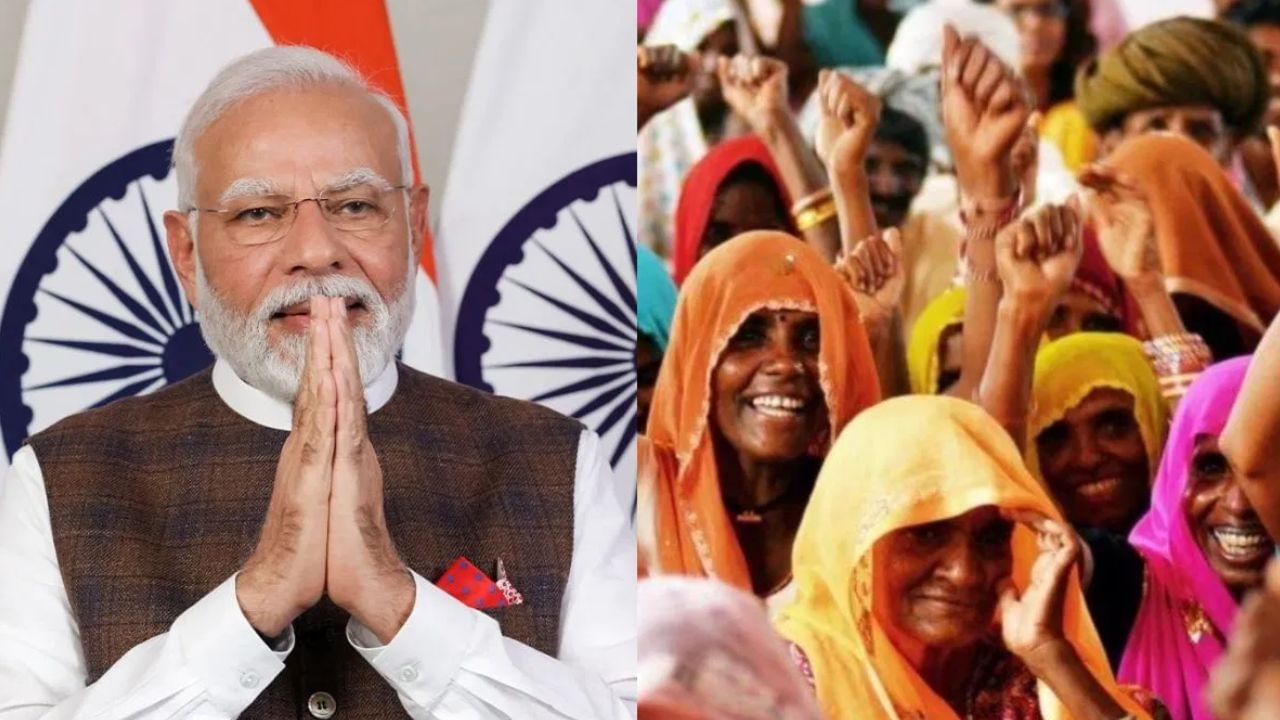New Delhi: One of the key pillars for achieving the vision of Viksit Bharat by 2047 is ensuring 70 percent women’s workforce participation. Women’s empowerment is no longer just a social goal but a critical driver of national progress. Under the leadership of Prime Minister Narendra Modi, India is witnessing a transformative shift: women are breaking barriers, stepping beyond traditional roles, and shaping the country’s economic future — from rural entrepreneurs to corporate leaders.
A significant rise in women’s workforce participation
India has seen a remarkable surge in female workforce participation. According to PLFS data, the women’s worker population ratio (WPR) rose from 22% in 2017-18 to 40.3% in 2023-24, while the unemployment rate (UR) fell from 5.6% to 3.2% over the same period. The shift is especially striking in rural India, where female employment has grown by 96%, compared with a 43% rise in urban areas.
Employability among women has also improved. Reports show that the employability of female graduates rose from 42% in 2013 to 47.53% in 2024. Among postgraduates and above, the WPR increased from 34.5% in 2017-18 to 40% in 2023-24. The India Skills Report 2025 projects that 55% of Indian graduates will be globally employable in 2025, up from 51.2% in 2024.
Meanwhile, EPFO payroll data highlights a steady rise in formal employment, with 1.56 crore women joining the formal workforce over the past seven years. On the other hand, the e-Shram portal has recorded over 16.69 crore women registered as unorganised workers as of August, enabling them to access various government welfare schemes.
From women’s development to women-led development
The Modi Government has shifted the national approach from women’s development to women-led development. Central and state-level initiatives are driving women’s entrepreneurship, with 70 central schemes across 15 ministries and over 400 state-level schemes supporting women entrepreneurs.
According to PLFS, women’s self-employment has grown by 30%, rising from 51.9% in 2017-18 to 67.4% in 2023-24, strengthening the vision of an Atmanirbhar Nari Shakti.
Gender budgeting has seen a dramatic 429% increase over the past decade — from Rs 0.85 lakh crore in FY 2013-14 (RE) to Rs 4.49 lakh crore in FY 2025-26 — underscoring the government’s focus on employment, employability, entrepreneurship, and welfare.
Flagship programmes are playing a catalytic role. Nearly 50% of DPIIT-registered startups have at least one woman director (74,410 out of 1.54 lakh). Schemes like Namo Drone Didi and Deendayal Antyodaya Yojana – NRLM are providing women with skills and resources to drive progress. Around two crore women have already become “Lakhpati Didis,” a testament to the scale of transformation.
Financial inclusion is also fuelling this change. Under PM Mudra Yojana, women have received 68% of loans — more than 35.38 crore loans worth Rs 14.72 lakh crore. Similarly, PM SVANidhi has empowered women street vendors, with 44% of its beneficiaries being women.
Women-led MSMEs are emerging as strong engines of growth, generating 89 lakh additional jobs for women between FY21 and FY23. The share of women-owned proprietary establishments has grown from 17.4% in 2010-11 to 26.2% in 2023-24. The number of women-led MSMEs has nearly doubled in the same period, from 1 crore to 1.92 crore.
Nari Shakti steering India towards Viksit Bharat
Women are no longer just participants in India’s economy — they are its backbone. With government initiatives creating an inclusive ecosystem through education, skilling, entrepreneurship, and equal opportunities, Nari Shakti is taking centre stage in steering India toward Viksit Bharat by 2047.
